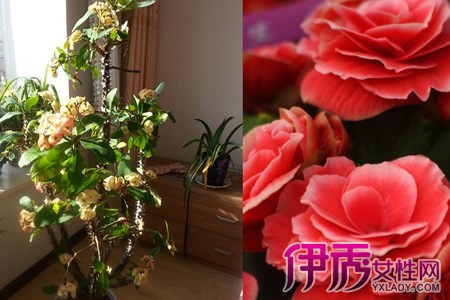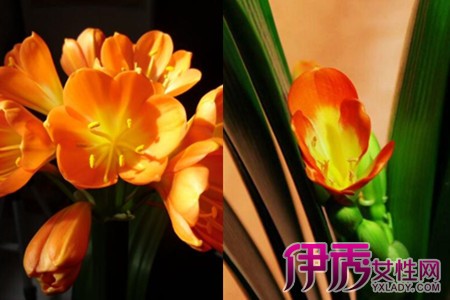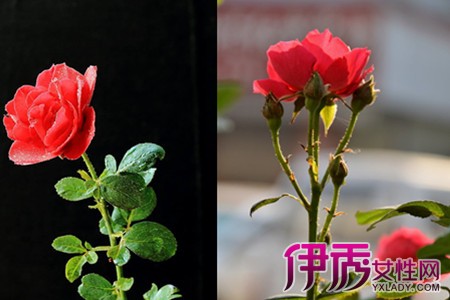Is the four Seasons Begonia poisonous? answer whether this kind of plant is suitable for indoor planting.

Planting delightful green plants indoors can not only remove dust and impurities from the air, but also have a powerful ornamental effect. Many people will plant green plants indoors, but when planting, they will not understand the efficacy and function of these plants, and many people will go into the blind area of indoor plant planting. Begonia is one of the most common indoor plants.
It is said that four Seasons Begonia is the most suitable plant for indoor planting, one of which is that its planting skills are not too tedious, the other is that it is highly ornamental because it blossoms in the four seasons, and the third is that it is non-toxic and can purify the air.
The four Seasons Begonia with exquisite flowers is a favorite plant for many people. Compared with many indoor plants which are quite locked in planting technology, it is more atmospheric, and the four seasons crabapple when the flowers are in full bloom give people a sense of vitality. This kind of flower is not only suitable for indoor planting, but also can give people a pleasant feeling when placed in conference rooms, restaurants and other places.
Beautiful flowers must be carefully cared for before they can grow more luxuriantly and beautifully. Compared with plants with tedious planting techniques, the planting technology of crabapple flowers in four seasons is very simple. When planting this kind of plant, it is best to choose sandy soil, sandy soil planting is most conducive to its growth. This kind of plant is not tolerant to drought, so we must choose a shade place for it in the hot summer. It should be moved to a warm place in cold winter. it is cold in winter and placed on the windowsill is not conducive to its growth.
To grow this kind of plant, you should not only understand its planting skills and key points, but also know the matters needing attention. When fertilizing this kind of plant, we must choose organic phosphate fertilizer, the amount of fertilizer should not be too much, nor can we not apply fertilizer for a long time, long-term lack of nutrition will lead to the death of plants. When watering, we must strictly control the amount of water, watering should not be too much in time, and keep the soil moist for a long time.
What about the yellow leaves of tiger thorn plum? is tiger thorn plum poisonous?
Rosa roxburghii is a kind of plant with beautiful flower shape and eye-catching color, which can beautify the room and purify the air when placed at home, so is it poisonous? What if the leaves of tiger thorn plum turn yellow? I'm going to give you an answer today.
Introduction to tiger prickly plum:
Tiger thorn plum, also known as unicorn thorn, iron begonia, is a kind of vine edge prickly plant. Although it is said that there are thorns on the edge of the tiger thorn plum, it does not affect the mood of people to like it at all. On the contrary, it has increased the love of many people because of the thorns in the appearance of the tiger thorn plum. Under the condition of temperature guarantee, tiger thorn plum can basically blossom all the year round and is one of the most popular ornamental plants.
Tiger thorn plum flowers are generally dark red or yellow, the flowers are relatively small, generally grow in pairs or in small clusters, with a unique gorgeous beauty, dazzling the heart.
The reason why the leaves of Prunus mume turn yellow:
The reason why the leaves of Prunus mume turn yellow: 1. Watering too much
Tiger thorn plum belongs to fleshy stems and leaves, not afraid of drought, but afraid of waterlogging, watering too much will hurt the root system, resulting in leaves yellowing and falling off.
Solution: reduce watering and move to a sunny place.
The reasons for the yellowing of Prunus mume leaves: 2. Excessive fertilization
Prunus angustifolia does not like fertilizer, and if too much fertilizer or unfermented raw fertilizer is applied in the breeding process, it will burn the roots and cause the leaves to turn yellow.
Solution: apply fertilizer properly and check to see if the fertilizer is suitable for the growth of Prunus mume before fertilization.
The reason for the yellowing of the leaves of Prunus mume: 3. Bad air
Thorn plum has certain requirements on the surrounding growth environment, the most suitable for ventilation, so generally planted in the courtyard, balcony more, if the indoor ventilation is not good, relatively muggy, it will lead to the yellowing of prunes leaves.
Solution: as far as possible, do not put the tiger thorn plum in a stuffy, airtight place, it is best to plant it in the courtyard, after all, tiger thorn plum has a certain degree of toxicity, out of safety is not suitable to be placed indoors.
The reasons for the yellowing of the leaves of Prunus mume: 4. Drug damage
When watering the plum, if it is tap water, it should be hung for a few days, otherwise the chlorides in the water are toxic to the plants, causing the leaves to turn yellow and fall.
Prunus przewalskii is easy to cultivate, generally rarely occur insect diseases, and elegant flowers, long florescence, is one of people's favorite decoration plants, but the tiger plum with thorns, be careful not to be stabbed.
Is tiger thorn plum poisonous?
Tiger prickly plum has thorns all over the body, and it will flow out white milk after being injured. This kind of milk is toxic and will have a certain irritating effect on the skin and mucous membrane of the human body. If the human body eats by mistake, it will cause certain problems such as leakage, vomiting, dizziness and so on. So the tiger thorn plum planted in the family should be stored well, so as not to cause children to eat by mistake.
In fact, although the milk of water tiger thorn plum is poisonous, but its flower branches and stems can be used as medicine, and its nature is cool and bitter. There's a little poison. It has the effect of removing poison and relieving fire, cooling blood and stopping bleeding.
In addition, tiger thorn plum is one of 52 cancer-promoting plants confirmed by relevant experts, so it is recommended not to plant it. The study found that tiger thorn plum carries "poison" all over its body. Prunes emit an unpleasant, pungent smell, and activating substances containing carcinogenic viruses and chemical carcinogens have been detected in soils that have been planted with such plants. According to experts, cancer-promoting plants such as prickly plum contain "Epsteln-Barr virus early antigen inducers", which can induce EB virus to transform lymphocytes and promote tumor growth caused by tumor viruses or chemical carcinogens.
More information on the collocation of tiger thorn plum and home style
As the saying goes, "the elegant room does not need to be big, the fragrance of flowers is not much." Put some flowers and plants indoors, green leaves, evergreen, so that the home appears full of spring, vibrant, and tiger thorn plum should be how to match with the home?
Tiger thorn plum also known as iron begonia, unicorn thorn, unicorn flower, originated in Madagascar, Africa. Some plants can play a role in fengshui. If you look out from the balcony of your home, the surrounding environment is bad, there is a shot at a corner nearby, the streets run straight, the streets turn against the bow, or facing temples, hospitals, cemeteries, and so on, plants that can dispel evil spirits should be placed. Tiger thorn plum has the role of protecting the home, it is the evil spirit plant, the evil spirit plant is different from the thriving plant, its stem or flower and leaf all have thorns, if there are thorns, you can rush to the top of the evil spirit and make it retreat. Tiger thorn plum with dense leaves and sharp thorns, easy to grow, is also an excellent evil spirit plant.
Prunus angustifolia is a horticultural hybrid of unicorn flower. The whole plant of the flower is poisonous and the white milk is highly toxic. Accidental eating will cause vomiting and diarrhea. It is understood that tiger thorn plum carries "poison" all over its body. Prunes emit an unpleasant, pungent smell, and activating substances containing carcinogenic viruses and chemical carcinogens have been detected in soils that have been planted with such plants. Therefore, it is not suitable for indoor breeding.
Thorn plum has certain requirements on the surrounding growth environment, the most suitable for ventilation, so generally planted in the courtyard, balcony more, if the indoor ventilation is not good, relatively muggy, it will lead to the yellowing of prunes leaves.
- Prev

When did the beautiful and noble orchid blossom? did you get the scientific planting method?
Cymbidium is a kind of highly ornamental plant, and it is more fastidious when planted. If you want to grow it well, you have to do a lot of homework. If you don't plant it properly, it's hard to keep it. Take a quick look at how to grow it.
- Next

The cultivation methods of rose flowers have skills to teach you a few simple points.
Rose is a common flower species in our daily life, belonging to evergreen low shrub, flowering in four seasons, usually red, or pink, occasionally white and yellow, can be used as ornamental plants, can also be used as medicinal plants. Rose is easy to raise, but it also takes skill.
Related
- Fuxing push coffee new agricultural production and marketing class: lack of small-scale processing plants
- Jujube rice field leisure farm deep ploughing Yilan for five years to create a space for organic food and play
- Nongyu Farm-A trial of organic papaya for brave women with advanced technology
- Four points for attention in the prevention and control of diseases and insect pests of edible fungi
- How to add nutrient solution to Edible Fungi
- Is there any good way to control edible fungus mites?
- Open Inoculation Technology of Edible Fungi
- Is there any clever way to use fertilizer for edible fungus in winter?
- What agents are used to kill the pathogens of edible fungi in the mushroom shed?
- Rapid drying of Edible Fungi

